Welcome back to the second part of our interesting series on the wonders of children's play schemas. PART 1 HERE , we explored the recurring patterns in children's play—those intriguing schemas that tell us so much about how each child interacts with the world.
We also touched on how understanding these patterns can significantly extend and support your intentional teaching experiences and overall environment setup. But let's face it, understanding these complex play actions and then planning around them when you're already time poor isn't always straightforward.
So, what if there was an easier way to navigate this tricky yet interesting area of early childhood development? There is! And I'm going to break down how you can use it as part of your documentation and planning cycle...
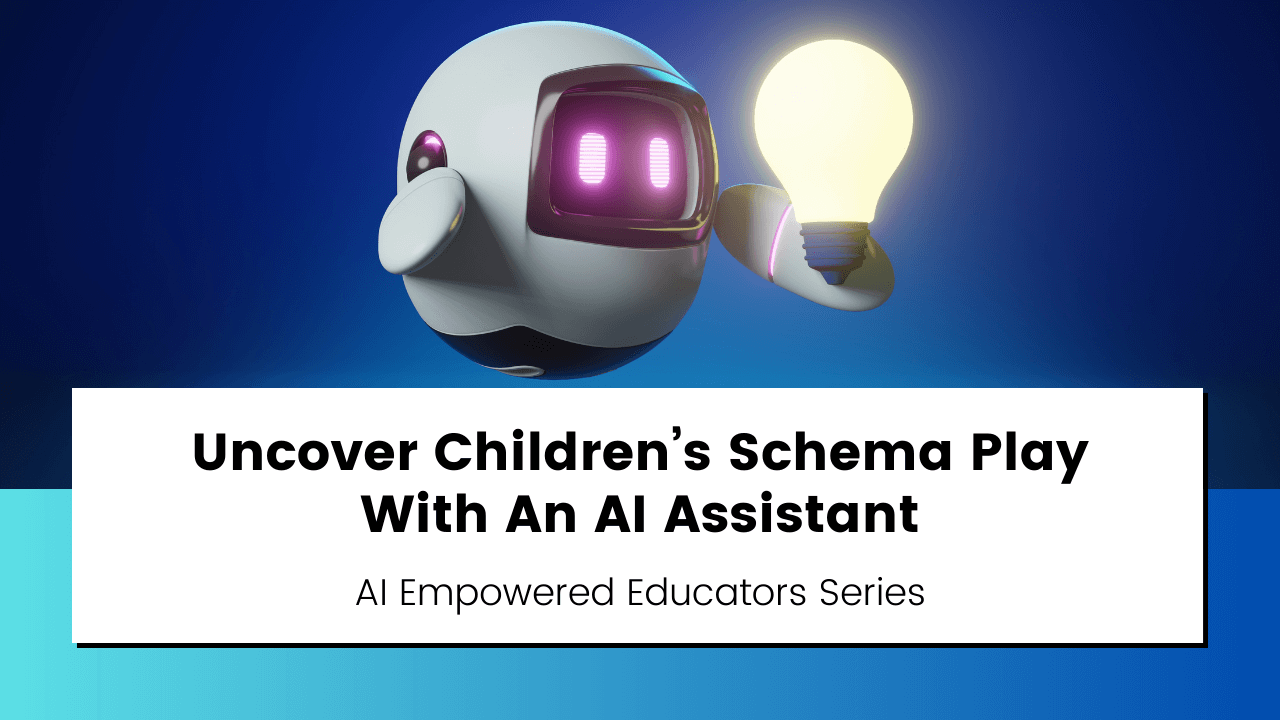
Picture this: an expert educational assistant, available at a click, ready to help you unravel the meanings behind these schemas and offer personalised suggestions for extending and supporting each child's individual learning journey.
Well, it's not just a dream; say hello to ChatGPT and others like it popping up every day right now, AI chatbot tools that can actually make the exploration and opportunities to encourage play schemas more manageable, time efficient and most importantly meaningful for the unique little humans you engage with everyday as an educator.
ChatGPT: A Simple Explanation for a Powerful AI Tool:
How Can ChatGPT Help Educators Observe & Support Play Schema In Early Education Settings?
If you're working in early childhood education, you'll already know that observing young children's behaviour and becoming more aware of their current development, interests, strengths, diversity, progress toward learning outcomes and play schemas (repeated patterns in their play) is a key part of building an overall picture for each child to better understand and support their development.
In part 1 we focused on what some of the most common schema behaviours look like and what they mean in terms of a child's early learning and development.
I gave you some tips and strategies to help you identify these play patterns as they emerge. But that's just the start because we now want to ensure we can expand on this information you've gathered through your observations by incorporating it into your forward planning, intentional teaching experiences and future environment setup.
Our focus now is on analysing what that behaviour or play pattern means for the child or group as a whole from the information we've observed and recorded.
But you're busy and this just sounds like more paperwork to do right?
So, this is where our AI friend ChatGPT comes in.
Because once you've identified these schemas, you can then use ChatGPT as a helpful assistant by prompting it with your specific observation notes and any other notes or knowledge you already have on this child's needs and learning goals.
However, to get useful and meaningful responses from an AI tool like ChatGPT that are specifically tailored to early education and the child you have observed, it's essential that you first understand how to share your important observation notes, personal knowledge of the child and analysis skills when 'chatting' with the AI.
By providing detailed ‘prompts’ about a particular play schema, educators can obtain valuable insights and suggestions. The responses you'll get can help you interpret these behaviours, suggest potential next steps, and give you strategies to support each child's unique developmental journey
And that's what I'm going to show you how to do in this 2nd part of the schema blog series!
For example, you might ask ChatGPT for advice on how to foster a child's trajectory schema while ensuring a safe environment for all children. The AI tool can then make a list for you of ideas for suitable activities, materials, and techniques that cater to this schema and the child's age, all while prioritising safety.
It's up to you as the educator to first bring your early childhood knowledge and skills to any AI tool first though if you want to receive responses that will align and inform your planning.
How can ChatGPT help you specifically with Schema Play then if you do this effectively? Let's break the possibilities down and take a closer look...
When given specific behaviour details, ChatGPT can:
- Suggest potential schemas reflected in play patterns.
- Recommend materials, environment changes and activities tailored to the observed schema.
- Help you analyse and document in more detail how schema support promotes a child's developmental skills.
Always review and reflect on ChatGPT’s (or any AI tool) evaluations and suggestions against your own professional judgement and knowledge of the children to ensure whatever you decide to use is appropriate and meaningful.
Schema Play Educator Prompts for ChatGPT
To help you get started experimenting with using an AI tool like ChatGPT to support your forward planning and extend on observed play schema behaviour , I've compiled ten 'fill in the blank' style prompt templates that you can use with ChatGPT.
I’ve designed these 'AI prompts'
(questions) to generate useful 'AI outputs' (responses) that will help you as an educator, recognise, understand, analyse ,and extend learning opportunities for different 'schemas' based on observations.
Take a look at the table below - the prompts are in the left column and then I've provided you with a brief 'why use this' explanation in the 2nd column that will help you connect to and clarify the responses you can expect to receive in return...it's important to first think about the information you want and WHY you want that information so you're not just wasting your time gathering information you don't need.
I would also encourage you to expand on these prompts when you get going so you can add in more detailed information about what you have observed and the child's current goals, interests etc. The more information you feed into the AI tool the more useful the information you get back will be!
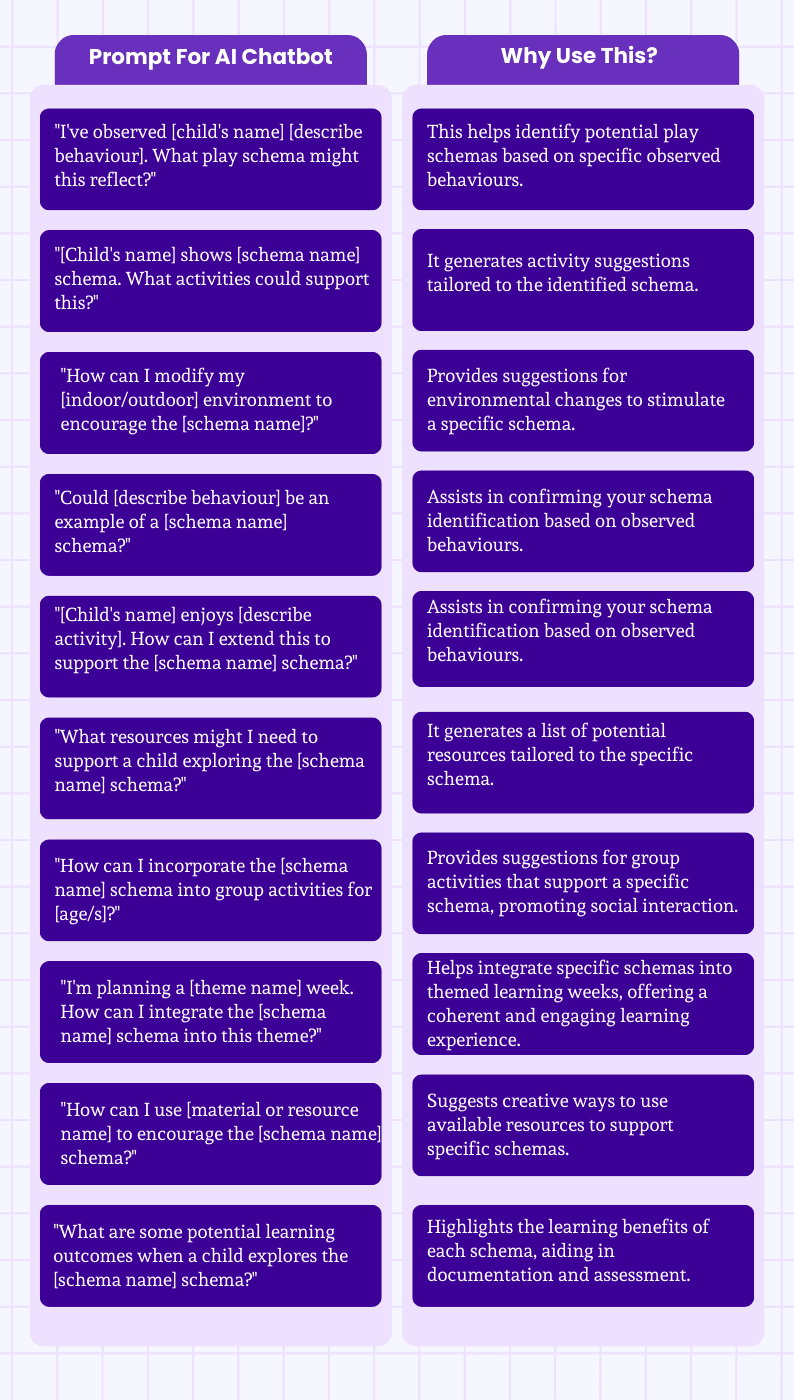
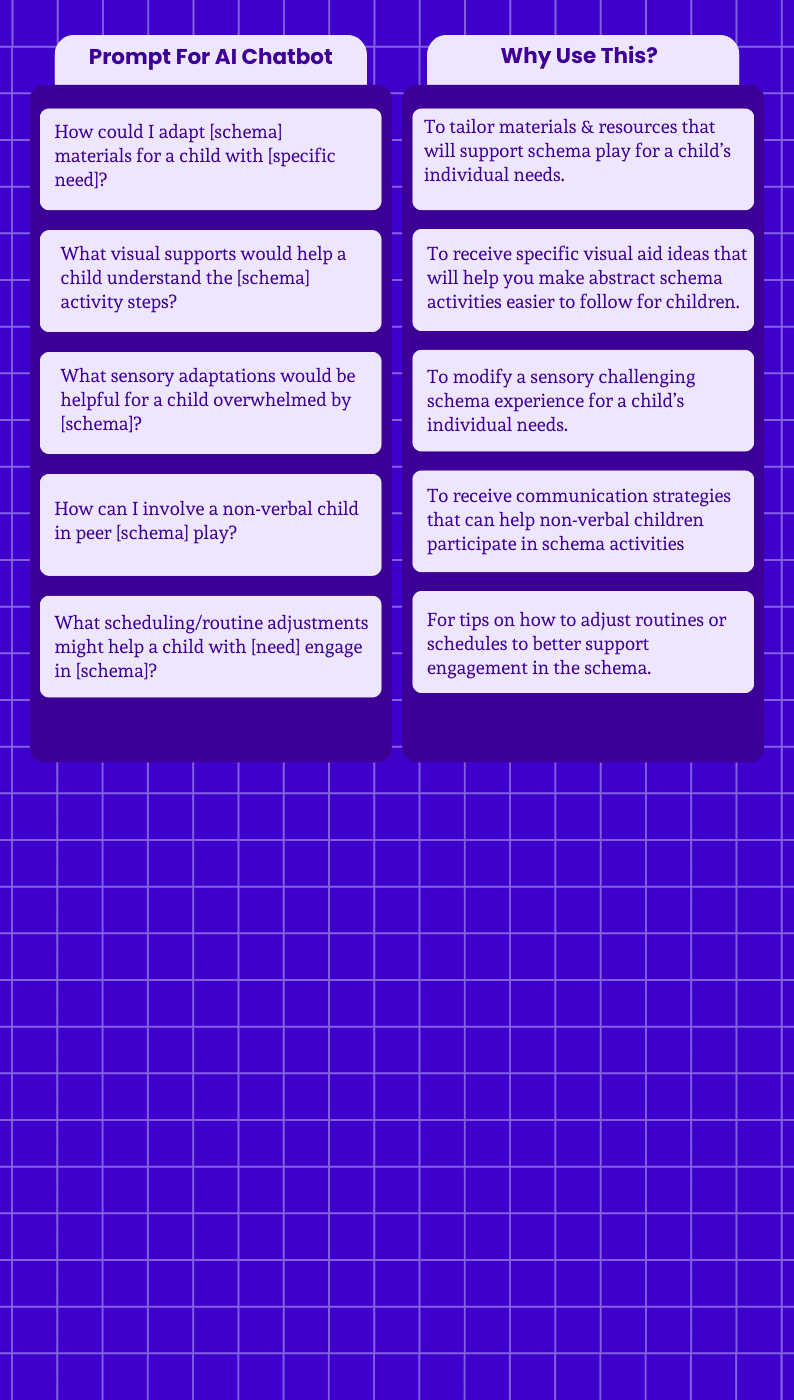
If you'd like to understand more about how to create the types of AI prompts that will get you useful, time saving planning and documentation support so you can write a whole lot less than you have to right now, I invite you to watch my new on demand workshop "10 Simple Ways To Use ChatGPT As Your AI-Powered Early Education Assistant"
I take you step by step through all the essentials and a whole lot more examples for both early learning centre and family daycare educators in my usual 'keep it simple' style with this workshop and you'll receive an accompanying action & reflection guide, a huge collection of done for you, fill in the blank style prompts even better and more detailed than the ones in the table below AND a professional development certificate signed by me as a certified ChatGPT expert tutor.
Let me share what I've learnt over the past year about AI tools so I can help you start using ChatGPT and other AI chatbot tools to help you create more personalised learning experiences, simplify documentation steps, and setup inclusive environments....in half the time it takes you now!
Use ChatGPT and other AI tools to help you:

For example, add ramps for trajectory schema or boxes for enveloping schema.

For example: Ask for ideas for a child you've observed using a connection schema.
🗎 Document learning - Note how different materials and resources used extend schemas and promote developmental skills.

For example, ask for materials to encourage a transporting schema.
When you understand how to use this tool effectively, ChatGPT opens up new possibilities in early education individual and group planning without it meaning more work for you!
How Educators can use ChatGPT to help plan, setup and engage with schema-supporting experiences...
So we now know what to look for to help us uncover and observe children's play patterns and how AI can help us to better understand common schema so we can document this in our observations, but what do we do with this information?
ChatGPT can give us valuable insights into schemas, providing practical tips on how to encourage play patterns, how to provide an appropriate environment, and how to identify learning opportunities within playful experiences.
Let's recap some of the common play schemas we explored in Part 1 and see how we can realistically use ChatGPT to deepen our understanding and align our play activities to more personalised learning goals…
ChatGPT & Trajectory Schema:
This play pattern is when you observe a child showing a repeated interest in the direction and speed of moving objects, often involving throwing, dropping, or climbing.

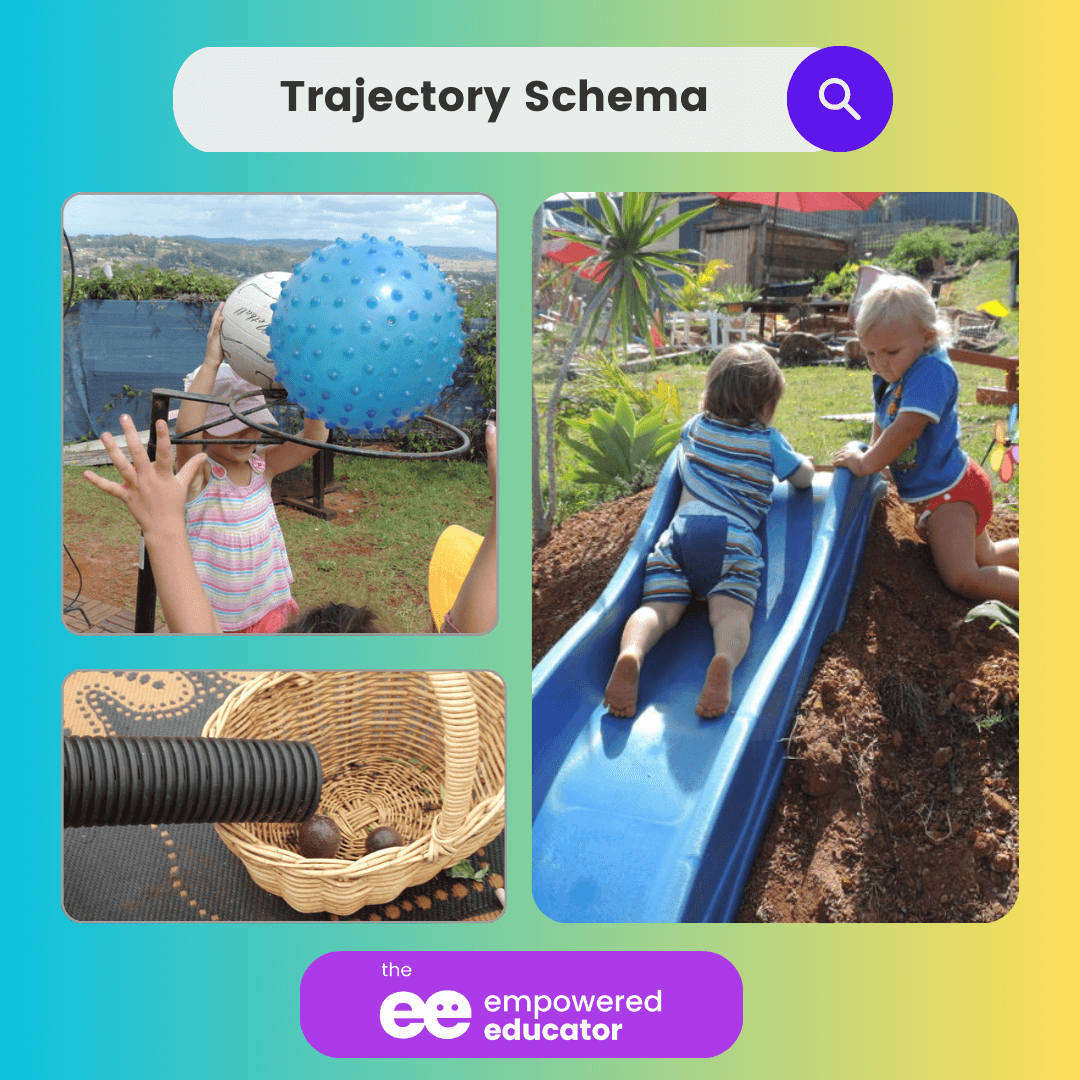
ChatGPT & Transforming Schema:
If a child is engrossed in changing the state of materials—like mixing mud and water or engaging in pretend cooking—they're likely exploring a transforming schema.

ChatGPT & Enveloping Schema:
Children displaying this schema enjoy covering themselves or objects, or hiding inside boxes or under blankets.

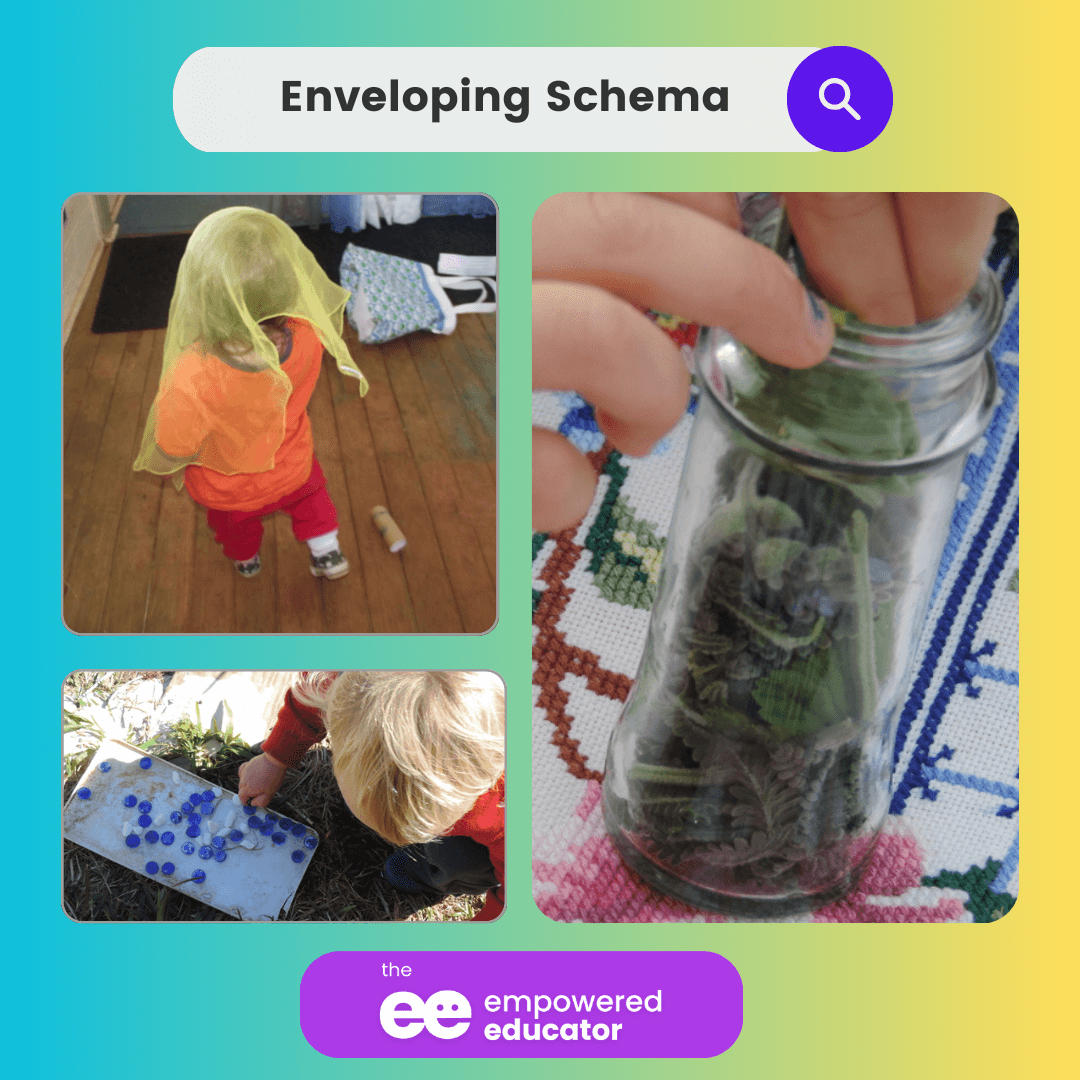
ChatGPT & Rotation Schema:
This schema involves a repeated interest in spinning objects, or their bodies, and in things that turn like knobs, handles, or wheels.

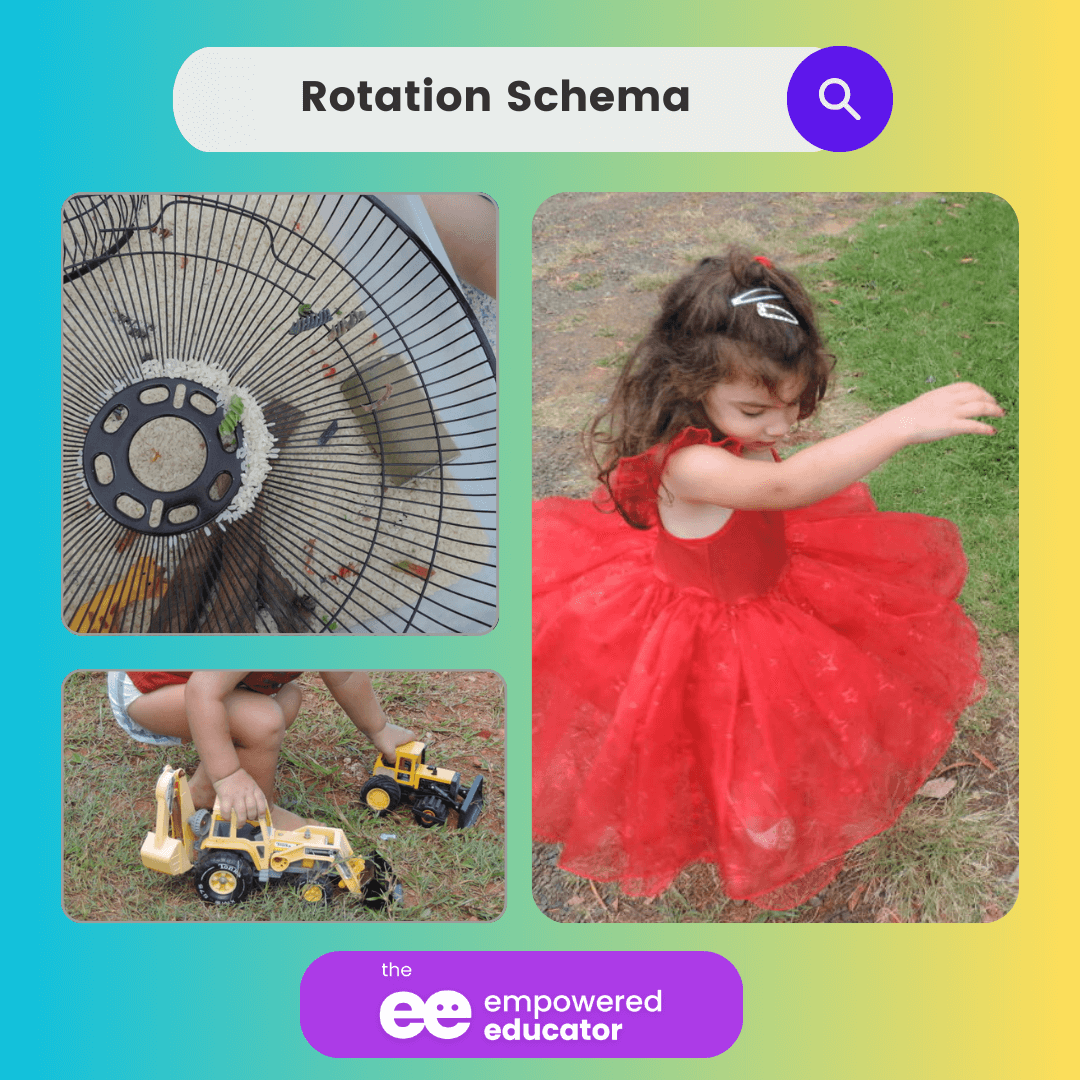
ChatGPT & Positioning schema:
Children who are interested in lining up, arranging, and positioning objects or themselves are engaging in this schema.

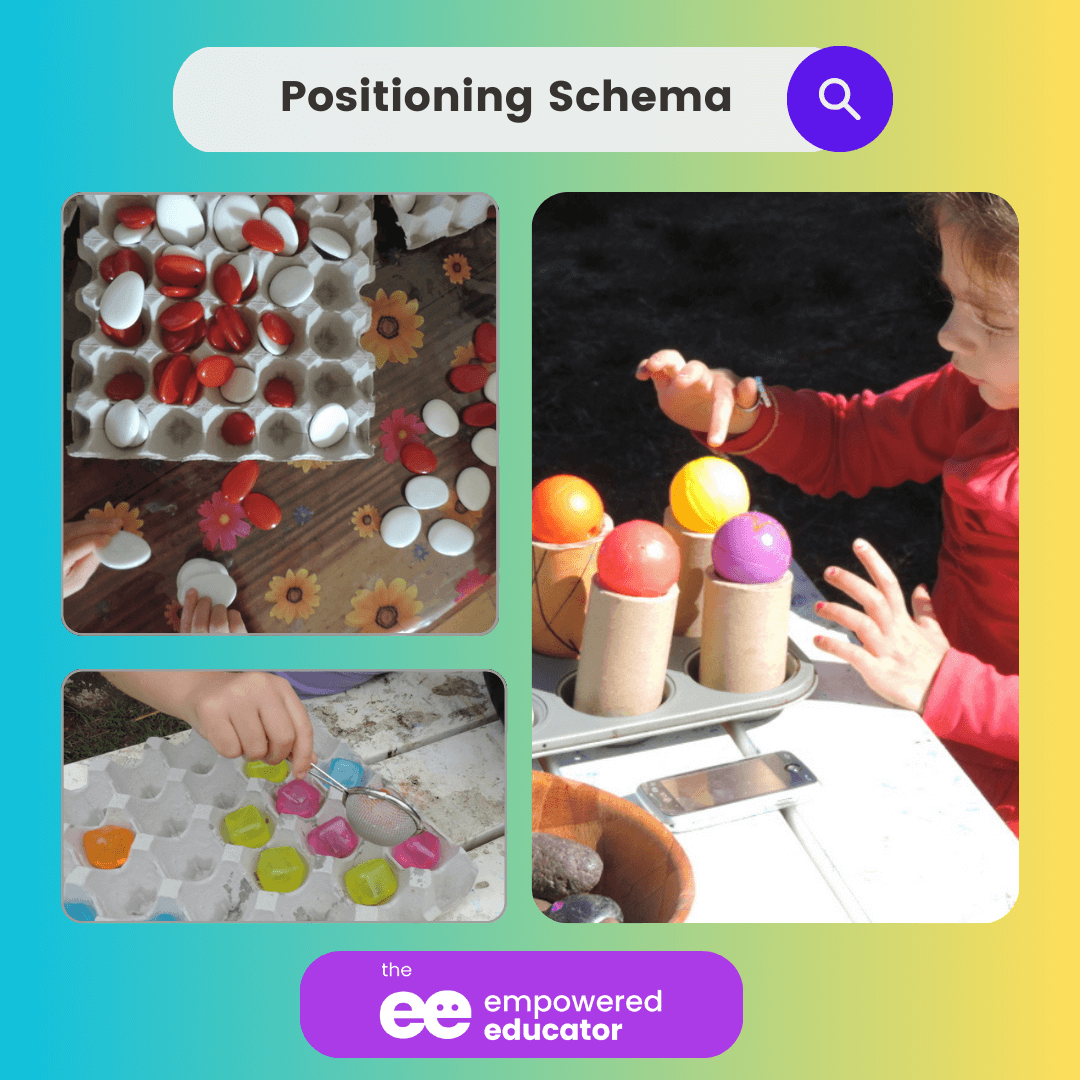
ChatGPT & Connection schema:
Some children love joining or disassembling things, tying things together.

ChatGPT & Enclosure schema:
Children who like to enclose themselves or objects inside spaces are exhibiting this schema

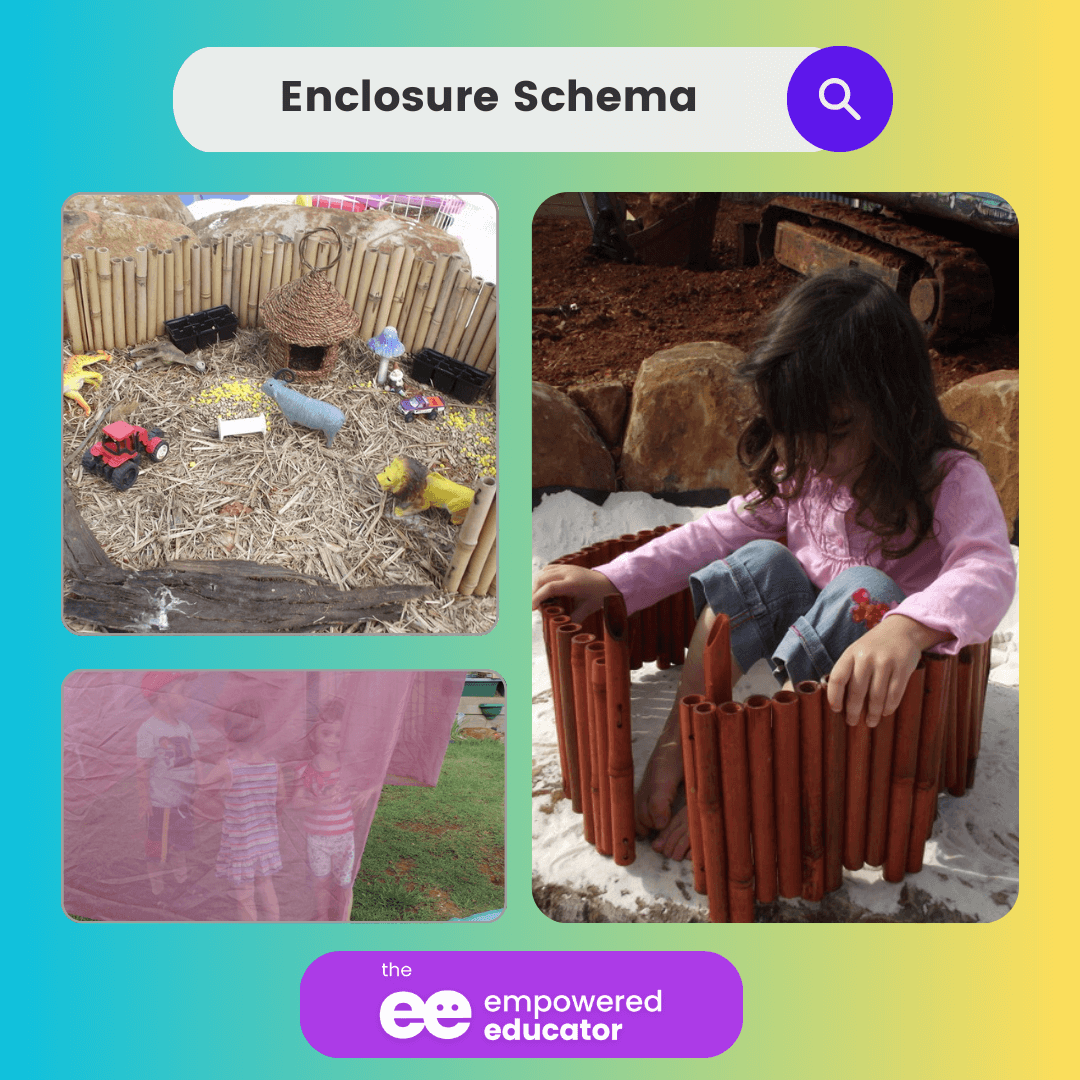
ChatGPT & Transporting schema:
Children who enjoy carrying, pushing, or moving objects from place to place are showing this schema

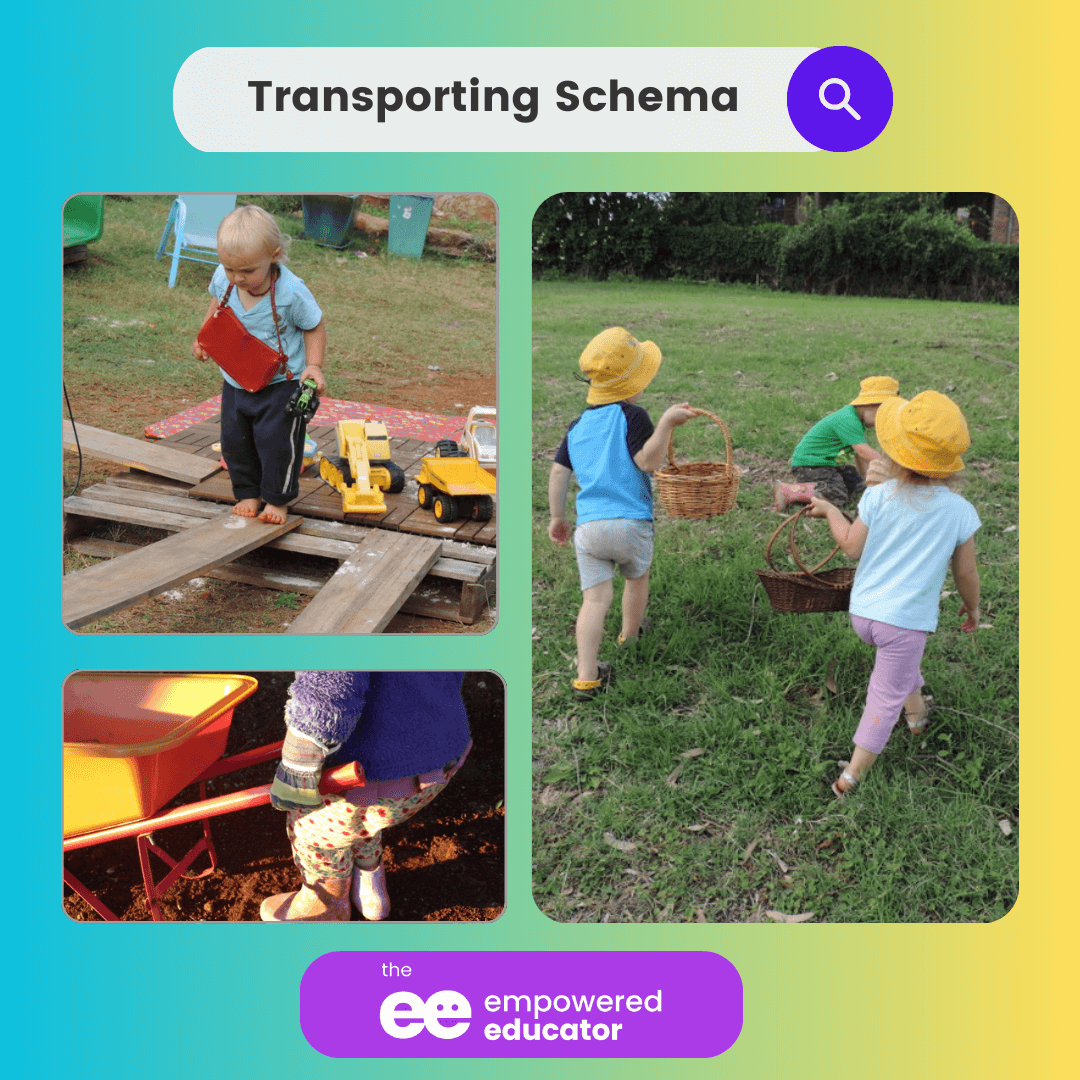
ChatGPT for Environmental and Planning Support
Beyond just identifying schemas, ChatGPT can also be a valuable asset in helping you to analyse the learning taking place and suggest modifications to your learning environments to support these play behaviours.
So whether you're planning your weekly activities or setting up indoor and outdoor play areas, ChatGPT can give you creative ideas customised to specific play schemas.
In Action Examples:
You observe a 2 year old child at your early learning centre showing a keen interest in connecting things together repeatedly, often linking train tracks or joining Lego blocks.
By querying ChatGPT with these observations, you could be informed of the 'connection' schema at play.
ChatGPT can offer suggestions on how to encourage this behaviour, such as providing materials like ropes or ties for connecting objects or planning activities involving building or crafting.
In another scenario, consider a toddler in a family daycare, who enjoys hiding inside boxes or covering objects with blankets.
When you ask ChatGPT about this behaviour, you'll learn about the 'enveloping' schema, with guidance on activities and resources to stimulate and extend this schema further.
Easier Analysis of Learning with ChatGPT
The schema insights revealed by ChatGPT can provide valuable evidence of a child's interests, strengths and approaches to learning and documenting this in summative assessments and learning journals paints a fuller picture of the child for both families and educators.
Being able to name and explain emerging schemas, provide detailed observations that support identification of these patterns, and explain how materials have been used in a way that intentionally extends the schema helps us to make the learning visible.
This level of documentation tells an engaging narrative about the child's unique learning journey.
When it's easier for educators to gain a comprehensive awareness of the schema play being observed, they can then provide more engaging experiences and intentional teaching opportunities that are specifically tailored to that child. This intentional extension of emerging interests through play promotes development across all domains and EYLF learning outcomes.
ChatGPT Tips for Schema Exploration & Observation
As you can see, when used thoughtfully by educators, ChatGPT supports the educators knowledge of the child, increases the usefulness of analysis, promotes extensions of learning and responsive material selection and setup to help reveal and engage children with schema play.
Follow these tips to make the most of your schema conversations:
- Provide objective observations detailing play details - clear descriptions without bias or assumptions
- Ask ChatGPT for alternate information or use a follow-up prompt to get more information and clarification on specifics if needed.
- Review ChatGPT’s conclusions and suggestions against your own professional knowledge - Balance educator expertise with AI input.
- Avoid over-reliance - use ChatGPT as one reflective tool among many in your toolkit
How Can Educators Use Different Materials to Encourage Schema Play?
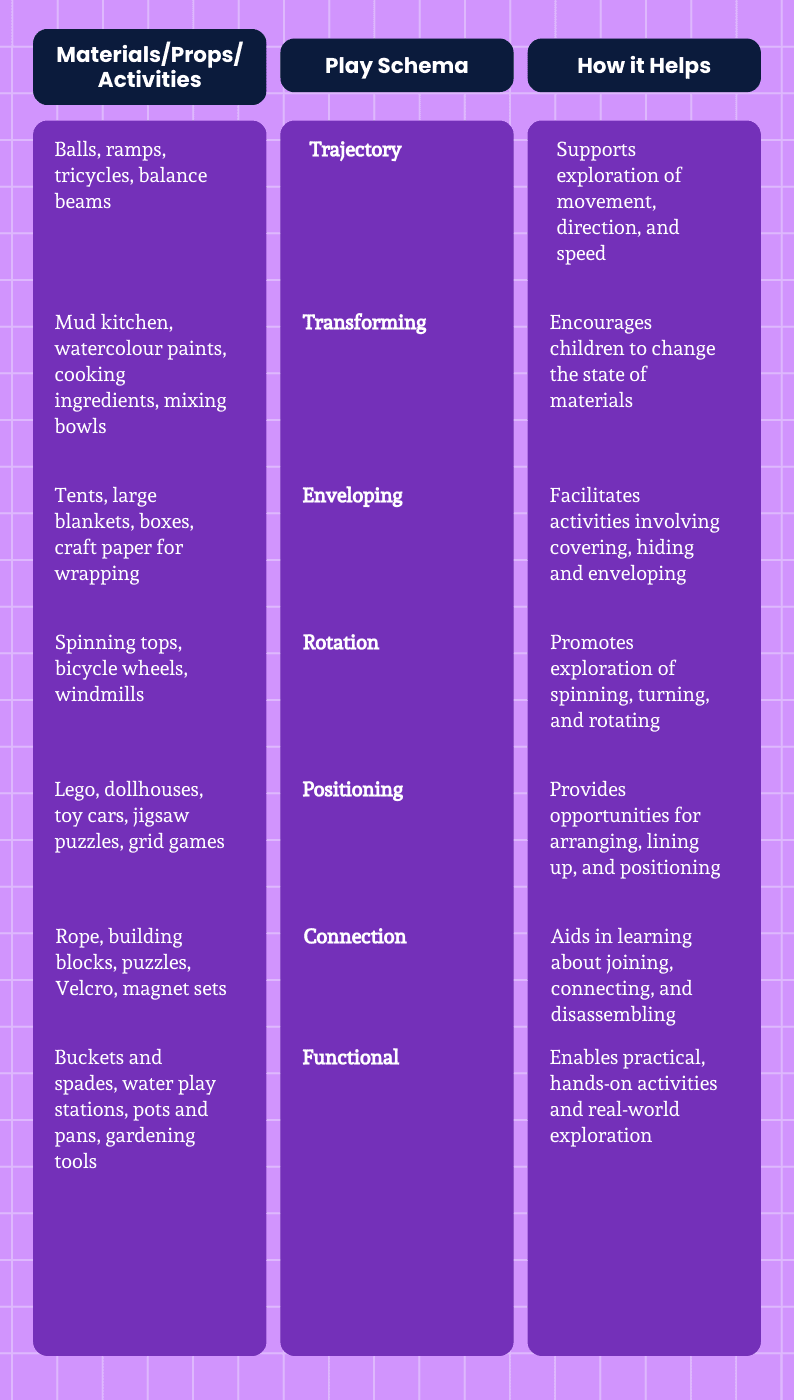
Keep in mind, this is just a simple guide to help you get started, the beauty of introducing a variety of materials, including open-ended materials, is that they allow children to bring their own imagination and creativity into play.
Depending on the child's interest and developmental stage, the same item could inspire quite a few different play schemas so don't box yourself into just focusing on one!
Supporting Schema Engagement for Diverse Learners
Schemas provide opportunities for all children to engage in play-based experiences when the resources used, and the environment setups are intentionally adapted to their abilities and needs.
Here's a few suggestions for you to ignite some reflective thinking, what could you try?
For Children with Physical Disabilities
- Provide access to schema experiences by modifying spaces and materials. Use adjustable ramps, suspended tunnels or trays to secure positioning items.
- Offer alternate modes of interaction like directing peers in schema play if needed.
- Consult therapists on helpful postural supports and grip aids to allow active participation.
For Children with Sensory Differences
- Gather schema materials with varying textures, sounds, weights and degrees of brightness.
- Allow children to approach slowly and engage at their own pace. Provide calming areas to retreat to if needed.
- Verbally prepare children for sensory experiences so they know what to expect ahead of time.
For Children Needing More Support to Engage
- Model schema play to provide examples for children to imitate.
- Use visual aids like photos, drawings or charts to explain play ideas
- Give prompts, cues and plenty of time for children to respond and join in play at their own pace.
- Break down schema activities into clear step-by-step instructions. Offer hands-on assistance.
Partnering With Families and Therapists
- Share documentation and observations about schemas with families. Gain their input.
- Ask therapists about schema modifications tailored to a child's learning plan.
- Coordinate across environments to ensure schema supports are consistent.
- With attentive scaffolding and strong partnerships, we can ensure unique schema-based learning opportunities for every child!
The Wonder of Schemas for Educators
Schemas certainly can reveal the astounding creativity and purpose within a young child's day-to-day play. Through observation and intentional support of 'play patterns', we can extend and support development across learning domains and outcomes with greater focus.
I hope this guide has helped you to better understand children’s schema play patterns and how you can also use artificial intelligence tools like ChatGPT to help you clarify, analyse and support children's emerging play schemas as you observe them.
It's a little bit like having a second pair of expert eyes to reflect on practice with you and create future engaging, more individual learning opportunities for each child in your care.
The best part is that anyone can access ChatGPT! It's free and simple to use. So why not give it a try?
You can learn more about ChatGPT in my on-demand workshop here - I also show you how to setup your new ChatGPT account so you can start experimenting with other planning and documentation prompts.
To get started exploring in ChatGPT, just enter some of your recent observations along with the prompts I gave you and additional information about the child you observed then see what you discover.
I'm willing to bet you'll be amazed at the schema behaviour and other information you uncover ... Let me know what you find out!



A Little About Me

Jodie Clarke is an early childhood professional supporting educators who want and need to stay passionate about the work they do! She has 30 years hands-on experience in the early childhood and human services sectors across many different roles.
Jodie is mum to 3 in Australia and has already helped thousands of educators with their work through her popular blog posts, activity ideas, online training and e-books.

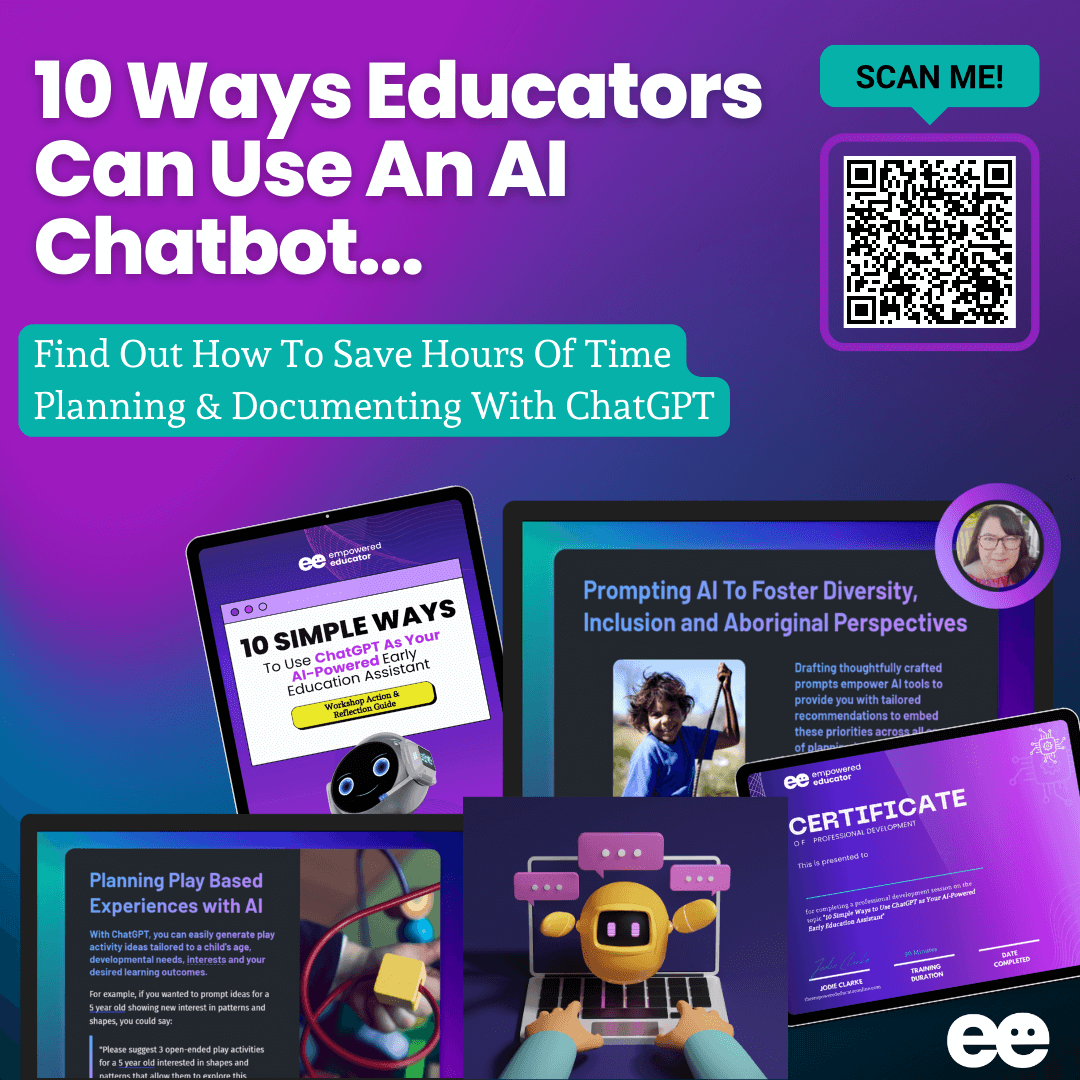
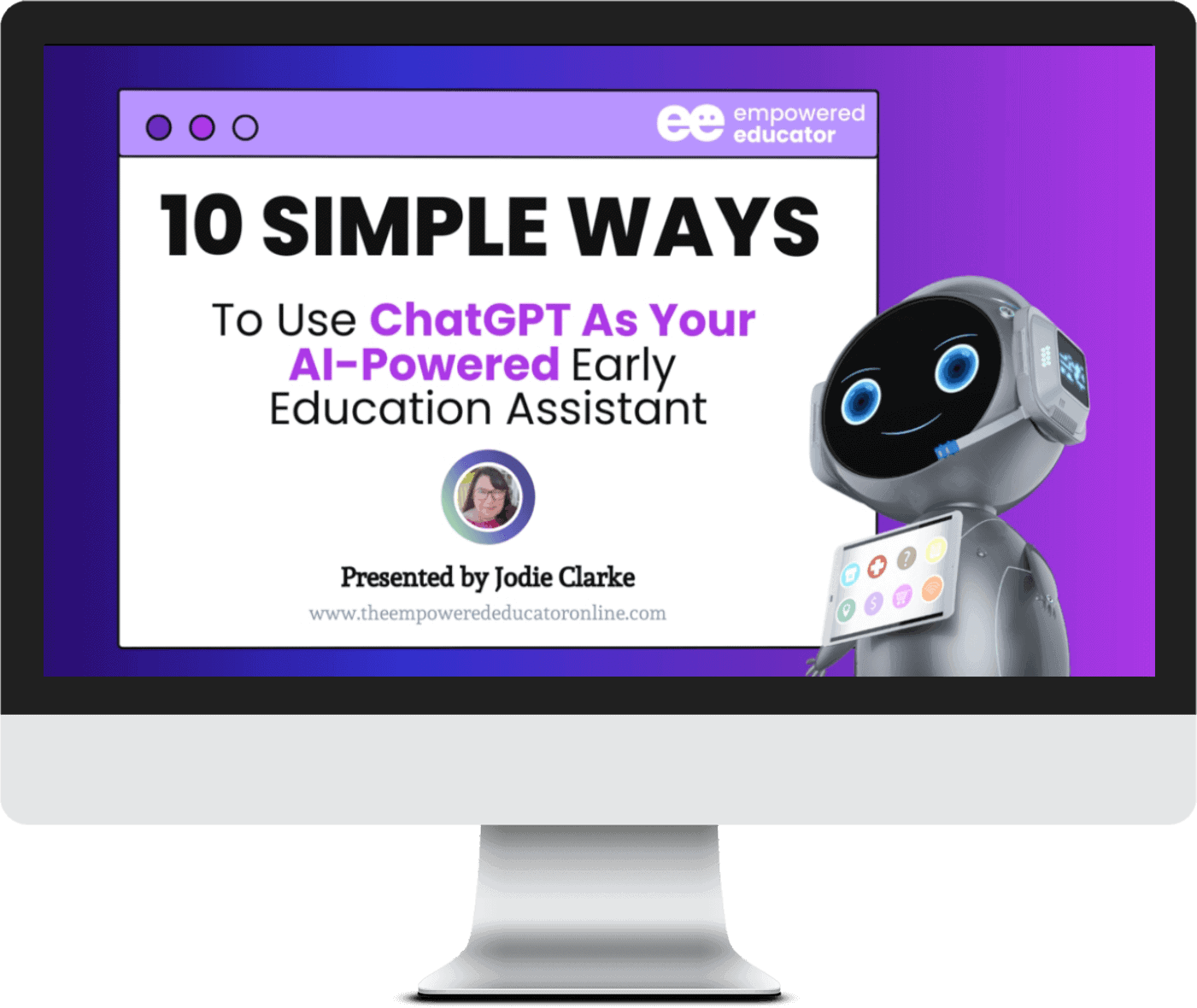
Leave a Reply